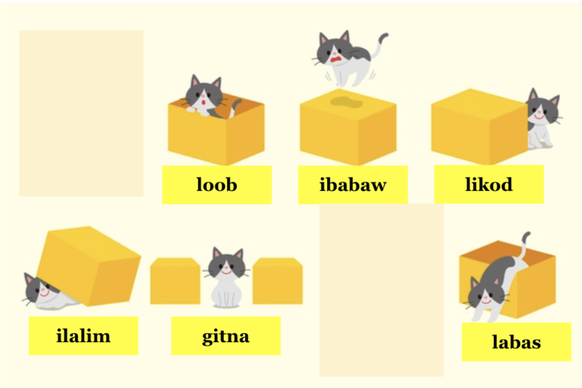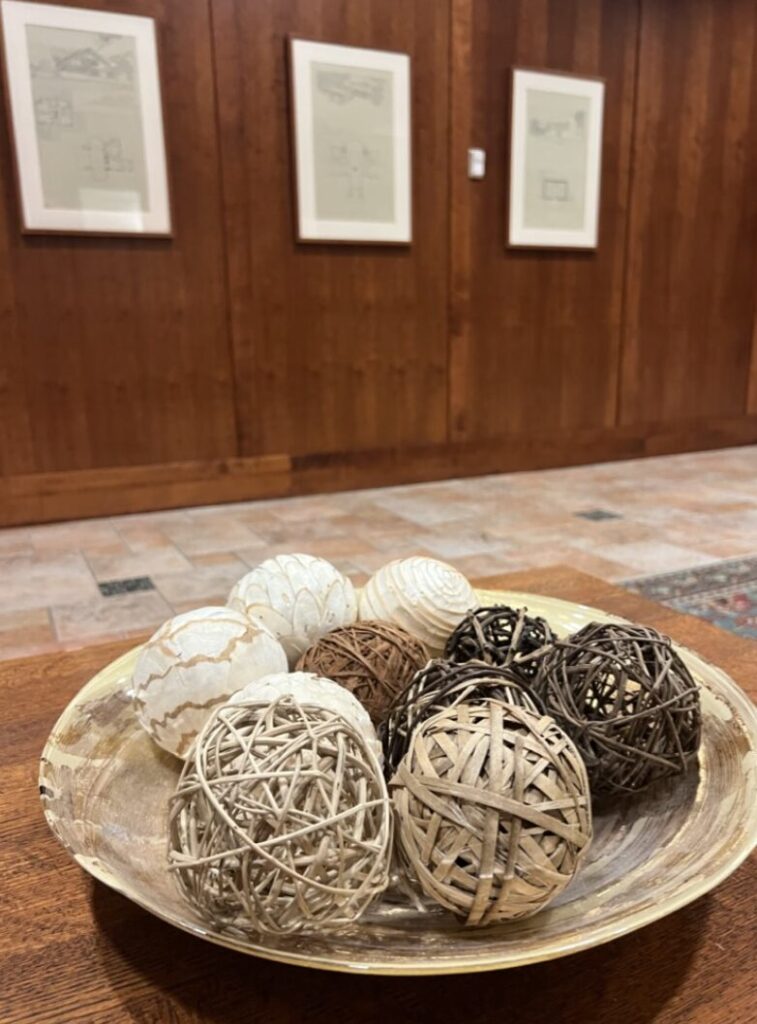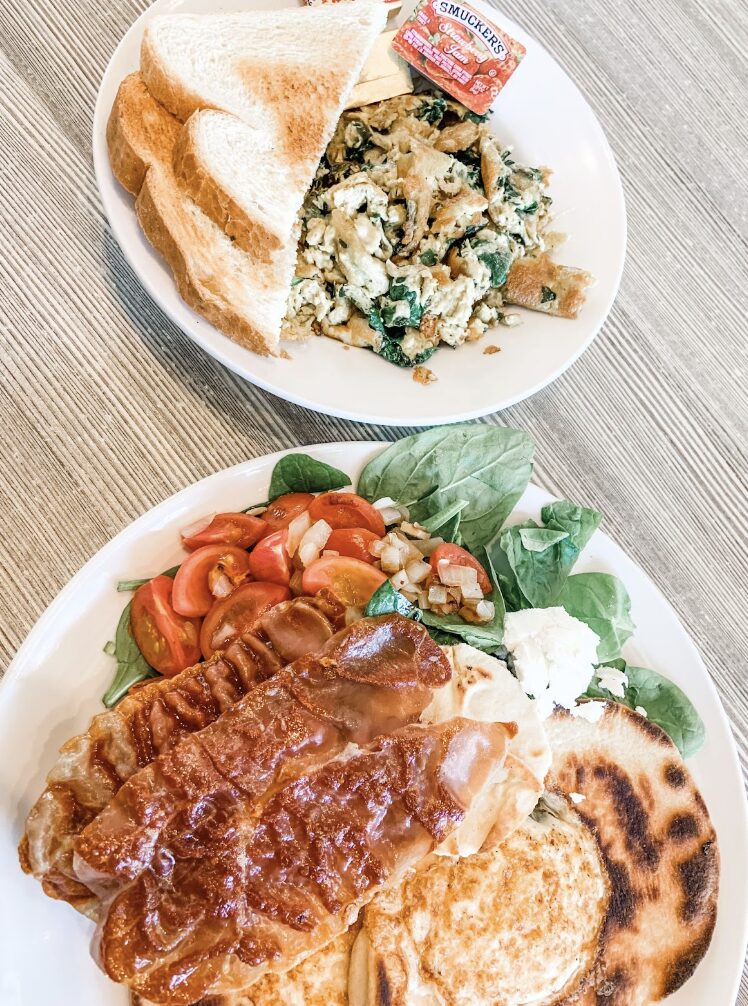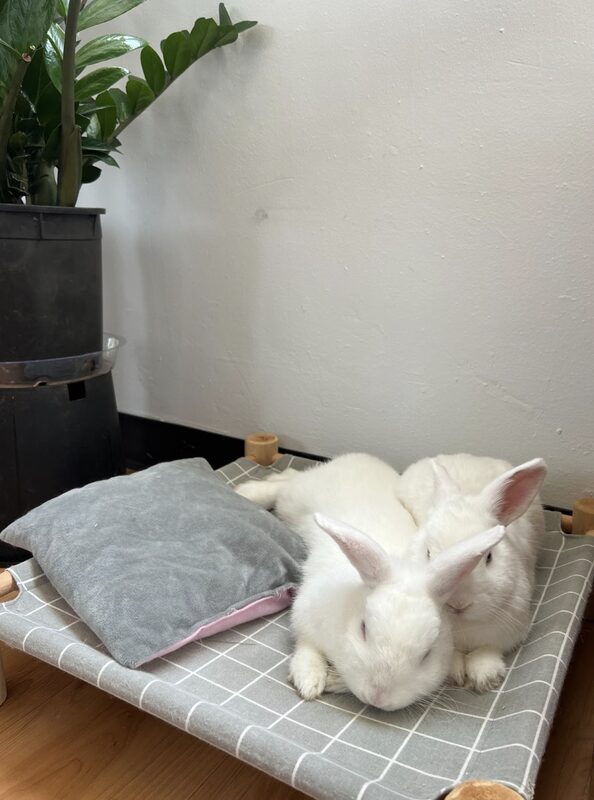written by Amy C Peria and Precious Arao
Background
This module is a continuation of Module 8 (Adjectives). You will learn how to
- create existential sentences using may and mayroon (there is/are, have/has),
- non-existential sentences using wala (there is not/are not, don’t have/doesn’t have).
You will also practice creating existential sentences that include adjectives.
Motivating Activity: Balikbayan Box Challenge
Note to Teacher: This activity helps you review adjectives from Module 8 and apply them in a fun, practical scenario related to Filipino culture.
Activity 1: Balikbayan Box – What’s Inside?
- Ask students: “Ano ang balikbayan box?” (What is a balikbayan box?)
- balik – return
- bayan – nation
The Balikbayan box is a deeply meaningful tradition for Filipinos worldwide. The word “Balikbayan” literally translates to “return to country” or “returning to one’s nation.” Beyond being just a corrugated box for sending goods, the Balikbayan box is a powerful symbol of love, sacrifice, and the enduring connection between overseas Filipinos and their families back home in the Philippines. These boxes are carefully packed with gifts, necessities, and various items like clothes, food, and toys, representing the sender’s care and economic support.
- To expand knowledge on balikbayan box, watch the following videos:
Student Activity Instructions:
Your task is to come up with a list of things to put inside the balikbayan box! You must meet some of these criteria in order for the box to be sent to the Philippines:
- You must state the quantity of each item.
- Each item must accompany an adjective (the number does not count, i.e., isang pulang damit – one red dress).
- You may not repeat numbers or adjectives.
- You must include food items.
- You must include objects.
- You must put at least 20 individual items in the box.
- You have 10 minutes to complete this task.
Example: What is in our box? (Ano ang nasa Balikbayan Box namin?)
- limang maalat na SPAM (five salty SPAM)
- isang mahal na iPhone (one expensive iPhone)
Processing Activity: Existential & Non-Existential Sentences
This section introduces the core concepts of “may,” “mayroon,” and “wala” for expressing existence and possession in Filipino, including their use with adjectives.
Existential Sentences: May / Mayroon (meron)
“May” and “Mayroon” (or “meron”) sentences indicate the existence of something.
Basic Examples:
- There is an apple.
- May mansanas.
- Mayroong mansanas. – (A linker is often needed to connect “mayroon” with other words.)
- There are three apples.
- May tatlong mansanas.
- Mayroong tatlong mansanas.
Describing Existence with Adjectives:
- There are six red apples.
- May anim na pulang mansanas.
- Mayroong anim na pulang mansanas.
- There is a blue bird.
- May asul na ibon.
- Mayroong asul na ibon.
Possession with Pronouns:
If there is a pronoun indicating who owns the object, “may” is immediately followed by a noun, adjective, or verb. “Mayroon” is immediately followed by the pronoun.
- I have a blue baseball hat.
- May asul na baseball hat ako.
- Mayroon akong asul na baseball hat.
- She has a green house.
- May berdeng bahay siya.
- Mayroon siyang berdeng bahay.
Non-existential Sentences: Wala
To state the absence or non-existence of something, wala is used. (Wala: there is not / the absence of / lacking something.) A linker is used to connect “wala” to the description (adjective) or noun.
- There is no house. = Walang bahay.
- There is no white pillow. = Walang puting unan.
Non-existence with Pronouns:
If there is a pronoun indicating who does not have the object, “wala” stands on its own, and the pronoun uses a linker to connect it to the adjective or noun.
- I don’t have a red apple. = Wala akong pulang mansanas.
- They do not have a baseball hat. = Wala silang baseball hat.
- We do not have delicious food. = Wala kaming masarap na pagkain.
Asking Questions with Existential / Non-existential Markers: “ba”
In Filipino, “ba” is an enclitic (marker) used to form questions. While not always required in speaking (tone can indicate a question), “ba” is often used to ensure clarity.
- May _____________ ka ba? (Do you have _________?)
- Oo, may _______ ako. (Yes, I have ______.)
- Wala, wala akong __________. (None. I don’t have ________.)
- Wala akong ________ pero may ________. (I don’t have _____, but I have _____)
Examples of Questions and Answers:
- May lapis ka ba? (Do you have a pencil?)
- Oo, may lapis ako. (Yes, I have a pencil.)
- Wala, wala akong lapis. (None, I don’t have a pencil.)
- Wala akong lapis pero may bolpen ako. (I don’t have a pencil, but I have a bolpen).
Activity 2: Get to Know Each Other (Using May/Wala)
Use the sentence structures learned to ask and answer questions about personal items and experiences. Your template is above.
- Dog
- Cat
- Work
- Netflix
- Hulu
- DisneyPlus
- Kapatid
- Kasintaha/Jowa
- Crush
- Guitar
- Chess
- iPhone
- Surfboard
- Asawa
- Car
- Money
- Birthmark
- Mole
- Meeting
- Bicycle
- Skateboard
- Hoverboard
- Paddleboard
- Kayak
- Plants
- Ate
- Kuya
- Allergy
- Fever
- Problem
- Question
- Printer
- Plans
- Goals
- Wish
- Volunteer
- Dance
- Practice
- Math Class
- Basketball game
- Yoga
Students may come up with their own items. If it is an item that can be described, make sure to instruct students to use adjectives with it.
Culminating Activity: Photo Description
Describe photos using existential phrases (may, mayroon) and state what is not in the photo (wala), including object positions.
Position/Direction Phrases:
To indicate the position of something, sa + [position] is used. For example:
- May pusa sa ibabaw ng kahon. (There is a cat on top of the box.)
- Mayroong pusa sa gitna ng dalawang kahon. (There is a cat in the middle of two boxes.)
Activity 3: Describe Photos

| Filipino Phrase | English Equivalent (Meaning) |
| loob | inside |
| ibabaw | on top |
| likod | behind |
| ilalim | under |
| gitna | middle / in between |
| labas | outside |
Have your students describe the following photos using what they have learned in this lesson. Feel free to add more photos or change the photos. Their answers must use existential phrases (may, mayroon) and state what is not in the photo using wala. Students must also indicate the position of the objects.



Enrichment Activity: Describe Your House/Neighborhood
This activity helps you further practice using existential sentences in a real-world scenario.
Activity 4: Describe your house/neighborhood
Student instructions: Your cousin is coming to visit you and wants to know descriptions about your house and neighborhood so that she can easily find your place. She’s commuting to your place and has not been there before.
- Take 10 photos showing your house and neighborhood.
- Each object that you find for your house and neighborhood must include the color and another adjective and must be existential sentences (use may, mayroon).
For example:
- Mayroong asul at mahabang gate. (There is a blue and long gate.)
- May brown at flat na roof ang bahay ko. (My house has a brown and flat roof.)
Vocabulary for Homes and Neighborhoods (Teacher Note):
You may have to introduce vocabulary related to homes and neighborhoods. For example:
- house – bahay
- roof – bubong
- wall – pader
- parking – paradahan
- small store – tindahan
- window – bintana
- gate – gate